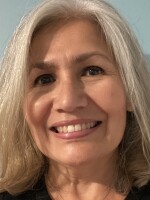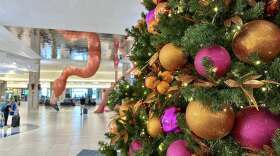LAHAINA, Hawaii – On a hot morning in Lahaina a few weeks after the wildfires, some 500 parents, teachers and students gathered under an outdoor tent, spilling onto the lawn.
Keith Hayashi — superintendent for Hawaii public schools — faced a tough crowd as he tried to reassure parents that the Department of Education (DOE) will make the right calls when it comes to reopening schools.
"I can't imagine what it's like to be in your shoes," he responded to a mother who was pleading to re-open schools in Lahaina. "But know that we will do our best in moving forward to make those decisions to support your students, to support you, and this Lahaina community."
Many kids on Maui missed out on an important ritual this year – going back to school. It's another consequence of the wildfire that destroyed or damaged many homes and buildings, including Lahaina's public schools.
Hayashi hears a lot of concern and anger from parents. "My senior athlete got robbed his freshman year, because of COVID. He got robbed half his sophomore year, because of COVID protocols," says Anela Gordon, whose son is a senior and a football player at Lahainaluna High School. "Now getting robbed his senior year? How fair is that?"
For many keiki – kids – in Lahaina, the first day of school would have been August 8 – the day when a wildfire burned through the town, leveling homes and businesses. It's the deadliest U.S. wildfire in over 100 years, with at least 115 people confirmed dead and over 60 still missing.
School had been canceled that day due to high winds – the same winds that took a brushfire that started near the high school's hilltop campus and fueled its rampage down the slope, leading to harrowing escapes for survivors.
It damaged one school on the waterfront – the King Kamehameha III Elementary school – beyond repair, and compromised the safety of the three schools still standing on the hilltop.
Now, the Lahainaluna High School, Lahaina Intermediate School, and the Princess Nahi'ena'ena Elementary School are closed, overlooking 2,000 acres of ash and debris. The Hawaii Department of Education says it will take at least two months to test the safety of the air, soil and water.

Samantha Kawaakoa lives in the neighborhood with her son, a five-minute walk from the elementary school he would usually attend. "My name is Kaikane, I'm from here and I'm 8," the boy announces to visiting reporters.
Kawaakoa says school is a very nurturing space for Kaikane, where he is well known.
"There's only one Kaikane," she says proudly. He's outgoing, she adds.
"There's two," he corrects his mother.
"I know there's two Kaikanes but when you say Kaikane, you're the one that pops to everybody's head," says Kawaakoa laughing, "They're like 'Kaikane!' He's loved by everyone."
Schools in other communities are not an option for many parents
Now, Kaikane spends his days at home.
On a weekday afternoon, a few weeks after the fire, there were volunteers testing their water and fixing the air conditioner. Locals stopped by to "shop" at the free community hub outside Kawaakoa's home — stocked with food, diapers, toiletries, milk, water, clothes and other donated goods. It's one of several grassroots sites that sprang up in Lahaina after the fires.
The home they live in didn't burn – but that doesn't mean it's safe, says Kawaakoa. "Every time that we cook rice, wash dishes or brush our teeth, we use bottled water, and when we come outside, we wear our mask as much as possible," Kawaakoa says, "It's very annoying, but we got to protect ourselves, cause no one's gonna do it for us, you know?"
The schools are closed for health reasons. "Is it any safer for Kaikane to stay home with her in these conditions?" Kawaakoa asks.
The Department of Education has offered some temporary solutions – parents can waitlist their kids for distance learning, or send them to schools in other communities – in Wailuku to the north or Kihei to the south. The high school restarts this week, in a different district that requires over an hour of daily commute time. So far, around 60% of Lahaina's 3,000 students are schooling elsewhere, according to DOE estimates.
For parents like Kawaakoa, those options are nonstarters. "That's far from home," she says, "Separation anxiety, you could call it."
The other schools are more than 20 miles away, past a narrow, winding stretch of highway through the pali – the cliffs — prone to traffic and falling rocks. It's the only direct road that goes in and out of Lahaina. Parents worry if there's an accident on the road – or another wildfire – they won't be able to reach their children.
Kawaakoa's son has ADHD and gets one-on-one assistance at school. In his typical school setting, "he's known and loved by everyone, from the staff to the students to the assistants," Kawaakoa says, "I'm not going to put him in a brand new school with people that don't know him. It's not fair to him or to them."
The superintendent of Hawaii's public schools says they'll reopen schools in Lahaina after the mid-October break – a month from now. Until then, Kawaakoa is taking care of Kaikane full time.
But many parents fear that if kids get scattered in other schools, their schools in Lahaina will never come back.
The Pioneer Inn, where Kawaakoa worked at the front desk, burned down in the fire. The job she loved is gone. "I'm a single mother. I have a car, I have a phone bill, I have rent to pay, but I was making it with my job," Kawaakoa says.
Now, without school, she doesn't have childcare, and going out to look for a new job is challenging. First, she says – she'll get Kaikane back in school. Then she'll figure out what's next.
Kids need emotional and social stability
Back at the community meeting, parents' anger keeps rising. It's been nearly two hours, and there's still a steady line of parents waiting to speak.
Mikey Burke comes to the microphone. She has four sons who are kaipuni students, enrolled in a Hawaiian-language immersion program embedded in the schools.
For the younger kids, "social and emotional well-being is the only concern," she says, and expectations for school in a disaster zone should be different.
"I don't need them to know math and science. Maybe a little P.E. [physical education]. Take them down to the beach. Teach them about their place. That's all we need right now," she says.
"Can they be safe and healthy in a tent like this?" Burke asks, gesturing around the open-air tent sheltering several hundred people from the sun, "Are we willing to use porta potties for the time being? We are people of the 'aina [the land] here. We know how to rough it in Lahaina," she says, to applause from the crowd.
Burke worries about the disintegration of her community. Already many families have moved elsewhere for schools, and though her family's home burned down in the fires, she says, they are not moving.

Instead, Burke and some other parents are looking to set up an outdoor space in northwest Maui where their children can learn together, pending approval from the Department of Education.
The kids here have grown up together. But if they don't stay together now, she fears they'll never be reunited. Or if they are someday, down the road – they'll be strangers.
Copyright 2023 NPR. To see more, visit https://www.npr.org.










